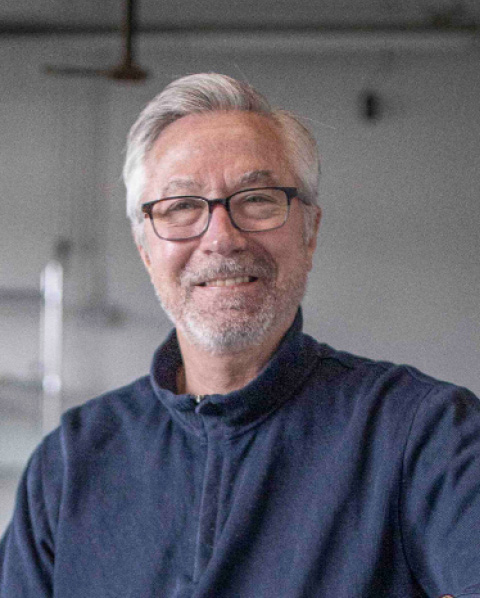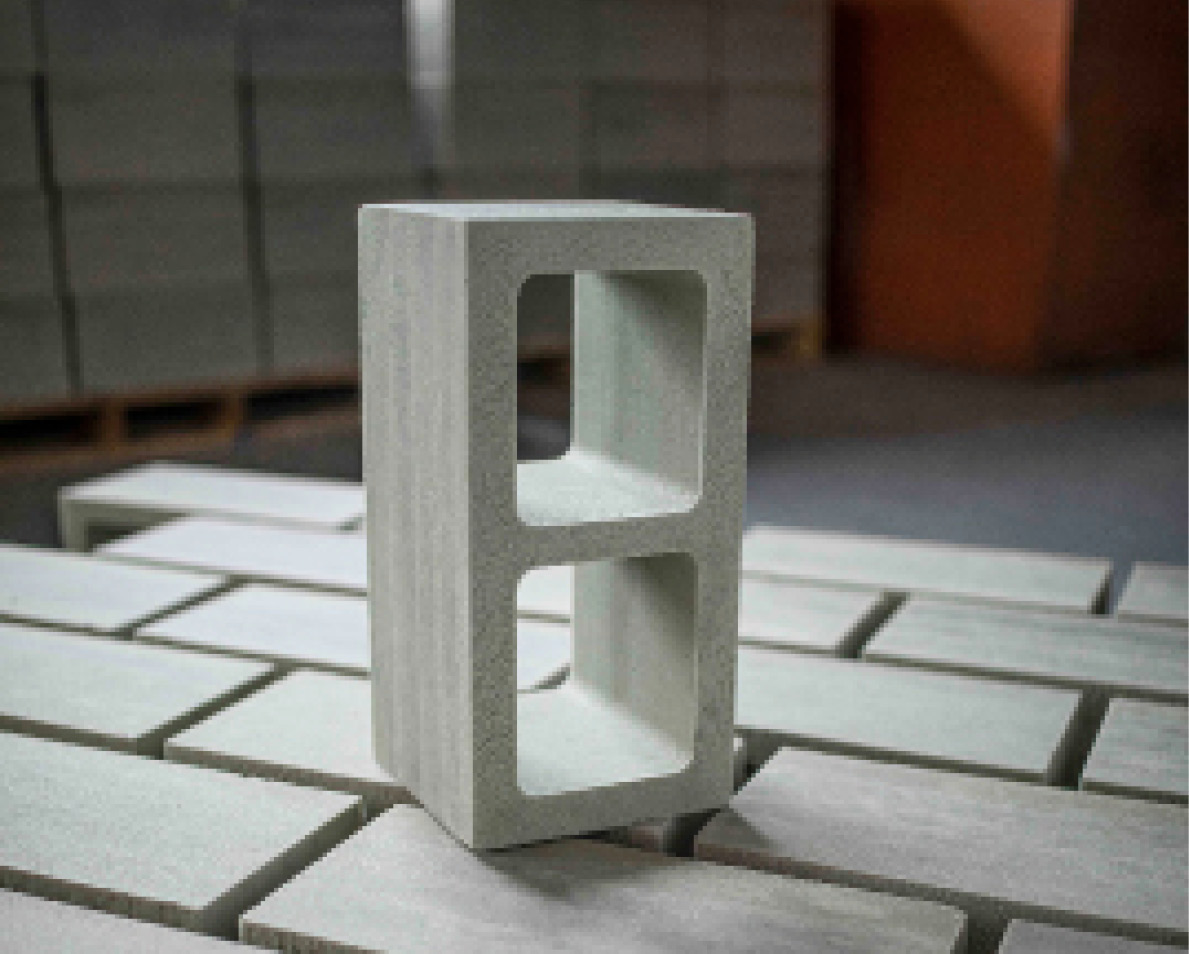

Investors targeting reduction of the carbon dioxide emissions factor in portland cement and concrete have focused on methods capturing, using or storing the greenhouse gas, plus new means of generating the high temperatures fossil fuel-fired cement kilns need to convert limestone and other raw feeds to clinker.
A Longmont, Colo. startup has garnered backing for technology paving a different path to a universal load-bearing material produced with a CO2 factor about one-tenth that of conventional concrete binder. On the heels of a well subscribed, initial venture capital funding round announced last month, Prometheus Materials is commercializing a process where complex compounds of carbon, hydrogen and oxygen reconstitute as an alternative to the calcium-silicate-hydrate with which portland cement locks sand, gravel and rock.
The company dubs its product a bio-concrete and credits the binding mechanism to bio-mineralization. The latter exploits the capacity of a single cell microorganism, or microalgae, to precipitate calcium, carbon, hydrogen and oxygen atoms, and promote development of calcite, a common form of calcium carbonate. Coupled with carbon-, oxygen- and hydrogen-rich natural polymers, the calcite secures fine and coarse aggregate in a matrix—emulating calcium-silicate-hydrate in fresh and hardened concrete.
“By using biological rather than chemical means to create a strong, durable binding agent for aggregate, we can now offer an alternative to carbon-intensive portland cement,” says Prometheus Materials Co-Founder and CEO Loren Burnett.
“Coral reefs, shells, and even the limestone we use to produce cement today show us that nature has already figured out how to bind materials together in a strong, clever, and efficient way,” adds Co-Founder and Chief Technology Advisor Dr. Wil Srubar III. “By working with nature to use existing microalgae to bind materials together to create new types of sustainable products, we can eliminate most, if not all, of the carbon emissions associated with traditional concrete-based building.” CO2 sequestration during production of the company’s bio-cement, he notes, results in an embodied carbon reduction upwards of 90 percent in finished products or structures when measured against concrete alternatives.
MIX DESIGNS, MOLDED UNITS
The binder at the heart of the Prometheus Materials process is comprised of bio-mineralizing algae and a hydrogel formulated from natural polymers, production capacity for which ensures reliable sourcing coast to coast. The microalgae is cultured from one of a handful of common bacteria strains used in consumer and industrial products.
Bio-concrete production is conducive to a typical plant environment. The biomineralization is driven by photosynthesis, which in turn facilitates calcite formation and aggregate binding. At the casting stage, a mixture of the biomineralizing algae and hydrogel is combined with aggregate and placed in a mold or form. Early testing has seen relatively dry mixes dehydrate and harden at rates equating to one-day demolding or form-stripping schedules, followed by five- to six-day strength development cycles.
“We have worked mainly with near-zero slump mixes,” says Dr. Srubar III. “When compared to a concrete mix, the bio-cement process allows higher aggregate contents and generates strong interactions and bonds between the fine and coarse materials. The result is a stiff matrix.”
The Prometheus Materials bio-mineralization process is rooted in a 2016-2020 University of Colorado Boulder investigation. It commenced under a $2 million grant from the Department of Defense (DOD), which eyed hybrid living materials with biological and structural function. Methods scalable in the field could position DOD to grow load-bearing materials in resource-limited environments.
As lead investigator, Associate Professor Dr. Srubar III was joined by University of Colorado Boulder colleagues: Assistant Professors Mija Hubler, PhD, Jeffrey Cameron and Sherri Cook. Midway through work with microalgae and natural polymers, they achieved a fine aggregate bio-concrete proof of concept. Preliminary R&D entailed more microscopy and petrographic analysis—typical of cement or concrete labs evaluating hardened material quality—than compressive strength testing.
Under DOD grant terms, technology with commercial prospects emanating from the investigation would become the University’s intellectual property. Lab observations and the ready availability of materials suggested the bio-concrete’s potential for broad construction use. Investigators elected to pursue commercialization by concentrating their material and process on a load-bearing staple: the 8- x 16-in. concrete masonry unit. Successful molding of 8- x 16-in. blocks—their mortar-like bio-cement mixes developing up to 2,000 psi compressive strength—compelled the professors to secure an exclusive license to the technology, spawning Prometheus Materials’ 2021 launch.

TRANSITION
Dr. Srubar III and his team handed business and administrative duties to Loren Burnett, a serial entrepreneur seasoned in technology transfer and licensing from public entities. He has overseen a transition of R&D from the Boulder lab to a Longmont, Colo. headquarters, and assembled a charter staff to advance 8- x 16-in. bio-concrete masonry units toward ASTM test performance and related validation measures, while tailoring mix designs for higher slump precast and cast-in-place elements.
The company’s $8 million Series A funding round, closed in March 2022, greatly augments Longmont facility build out and pursuit of bio-concrete casting at market level. The biggest ticket item on order is a concrete block machine, commissioning of which will command staff energy in the second half of 2022. After the machine is up and running, the Prometheus Materials team will evaluate formwork and processes for architectural or sound wall panels, plus other precast products. From one prospective application to the next, it will aim to demonstrate bio-concrete material performance in line with engineering properties essential to residential or commercial building code compliance.
Block and precast elements will be marketed to architects, engineers, property and facility developers, and other construction prospects as a strong, durable, zero-carbon alternative to conventional concrete. Prometheus Materials’ staff will likewise measure the potential their process holds for use in ready mixed form. As the technology proves in low- to high-slump casting conditions, the company will weigh licensing options for incumbent concrete producers or new operators capable of batching, placing and curing bio-concretes.

INVESTOR ACUMEN
Prometheus Materials’ potential to commercialize a low-carbon technology applicable to an industry on the order of construction drew a diverse group of investors, led by Sofinnova Partners, a life sciences venture capital firm in Paris.
“We’ve been impressed by the team’s ability to deliver a long-sought, sustainable, and highly effective replacement for traditional portland cement, minus the carbon emissions,” affirms Sofinnova Partner Joško Bobanović, a member of the investor’s Industrial Biotech team. “This solution demonstrates the power of biology to replace existing industrial processes with climate-friendly alternatives.”
Other funding round participants are uniquely positioned along the construction value chain: the Microsoft Climate Innovation Fund, Chicago-based architectural/engineering giant Skidmore, Owings & Merrill (SOM), GAF, and The Autodesk Foundation. None are strangers to cement-based products and concrete practice. Beyond its core residential and commercial roofing lines, for example, GAF produces Weatherside fiber-cement siding series. SOM, on the other hand, has an unrivaled track record in reinforced concrete engineering, demonstrated most convincingly in Dubai’s 2,700-ft. Burj Khalifa tower.
With a host of data center and corporate campus developments in the works, Microsoft brings the investor group a perspective few project owners can match. “Sustainable building materials, like the carbon negative solution from Prometheus Materials, will enable our data centers to actually sequester carbon,” observes Microsoft Sustainability Solutions General Manager Mark Kroese. “We are proud to be working on this pilot program, and investing in companies that accelerate building decarbonization through our Climate Innovation Fund.”
“Our investors see how we can impact an industry calling for low-carbon solutions to traditional applications, and also apply its technology to new uses,” concludes Prometheus Materials President and CEO Loren Burnett. “We have a novel material absolutely different from portland cement concrete. Our bio-cement will transform architecture as we know it by providing the construction industry with a new decarbonized building material that has environmental and mechanical properties that mirror or exceed the capabilities of concrete, wood, steel, and glass.”